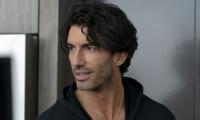The Punjab government presents its true annual budget at the end of a fiscal year. What it brandishes at the year’s beginning gives only a rough outline of the official plans ornamented with bloated figures of income and development allocations.
The provincial budget document does not present a true picture of the government’s economic and fiscal prioritiess. The provincial assembly passes one budget, but the government implements a budget that is much different from the one that has been approved.
Each year, the provincial government presents an inflated estimate of its income – which always falls short of the so-called target. It understates the administration’s current expenditures, which invariably exceed the budgetary projections. And it publicises an outlay for development projects from which it in fact spends only 50 to 70 percent of the original allocations.
In 2015-16, the provincial government’s current expenditures surpassed the original allocation by Rs107.9 billion – an amount that is more than 40 percent of the total development expenditure in the same year. In the preceding year, this excess expenditure was to the tune of Rs42.9 billion. No one on the treasury benches ever questions the administration’s prodigal ways. This is the kind of parliamentary democracy we have.
On the income side, for example, take the example of agriculture income tax from rich farmers. At the time of presenting the budget for FY2015-16, the government said that it would collect Rs2.3 billion under this head but it received much less – only Rs1.2 billion. Similarly, in the same year the income from land revenue (maliana) was shown to be Rs13.7 billion but the actual receipts fell short at Rs11.3 billion.
In 2016-17, like the past years, the provincial government has shown estimates of its income by including transfer of Rs47 billion in hydel profit from the federation to Punjab. Last year, too, the government showed a huge amount in hydel profit but did not receive it. The purpose has been to show a larger income than the real one.
The fact is that the provincial budget has a shortfall of Rs115 billion in its income and expenditures which will be met through foreign loans. The province will borrow Rs30 billion from the World Bank to meet its budget deficit and Rs85 billion from China’s EXIM bank for Lahore’s Orange Train project.
In addition, the province has borrowed money from DfID (UK) for health and education programmes and from Jica (Japan) for water supply in cities. At the end of the FY2015-16, Punjab’s total debt amounts to Rs533.1 billion which will shoot to Rs620 billion at the end of 2017. Neither the speech of the provincial finance minister nor the government’s advertisement campaign for the budget tell us this fact.
Each year, the annual development budget is used as a political stunt with false allocations. There is a wide chasm between what is shown in the budget document and what is spent on ground. In 2015-16, the government spent Rs280 on development projects as against the original allocation of Rs400 billion – or 70 percent of the total outlay. In 2014-15, the development spending was Rs249.7 billion against the original allocation of Rs345 billion – 72 percent of the total.
For the next year, the government has announced with fanfare that it has earmarked a record development outlay of Rs550 billion for development. However, given the government’s track record, it can be safely assumed that the actual spending will not be more than Rs300-350 billion.
The government will probably keep quoting these development figures all year round – for the masses to absorb. It has officially been made mandatory that all development projects will devote 0.5 percent of their outlay for advertisement besides billions of rupees from the provincial information department.
The development projects in the areas of education, health, population and environment receive only 30-50 percent of the total money shown in the budget. In contrast, each year, a hefty amount of tens of billions of rupees is spent on development schemes not mentioned in the budget but earmarked as block allocations named as “below the line” and “special initiatives”. The government spends these funds at will without providing details to the Punjab Assembly.
In FY2015-16, the government allocated Rs32.8 billion for the development of the education sector but it spent little more than half of this amount. This happens year after year. This despite the fact that millions of children between the ages of five and 15 are out of school in the province.
Funds are in short supply for education and health even if allocations are made in the budget. But, there is no shortage of funds for the chief minister and governor of the province. In FY2015-16, the budget of the chief minister’s secretariat (besides the provincial secretariat) was Rs344 million which now has been raised to Rs424 million. In the outgoing year, the governor’s secretariat spent Rs241.8 million and is set to receive Rs264.7 million in the coming year. The Punjab government plans to buy a new helicopter for the chief minister.
The whole financial system is running at the whims of the provincial head. The lawmakers of the province – those who are supposed to hold the rulers accountable in a parliamentary system – dare not to challenge the government’s actions.
Email: adnanadilzaidi@gmail.com
Now, court can only act upon applications filed under its jurisdiction
Fact is that let alone Pakistan, Trump hasn’t really spoken much for any South Asian country, not even India
By embracing quantum mechanics, humanity has unlocked technologies once thought unimaginable
Regular reporting could ensure accountability and adaptive management
Report assesses readiness of over 190 countries to meet demands of the international job market
In Pakistan, prospect of introducing Starlink has been topic of discussion, particularly due to frequent internet...







